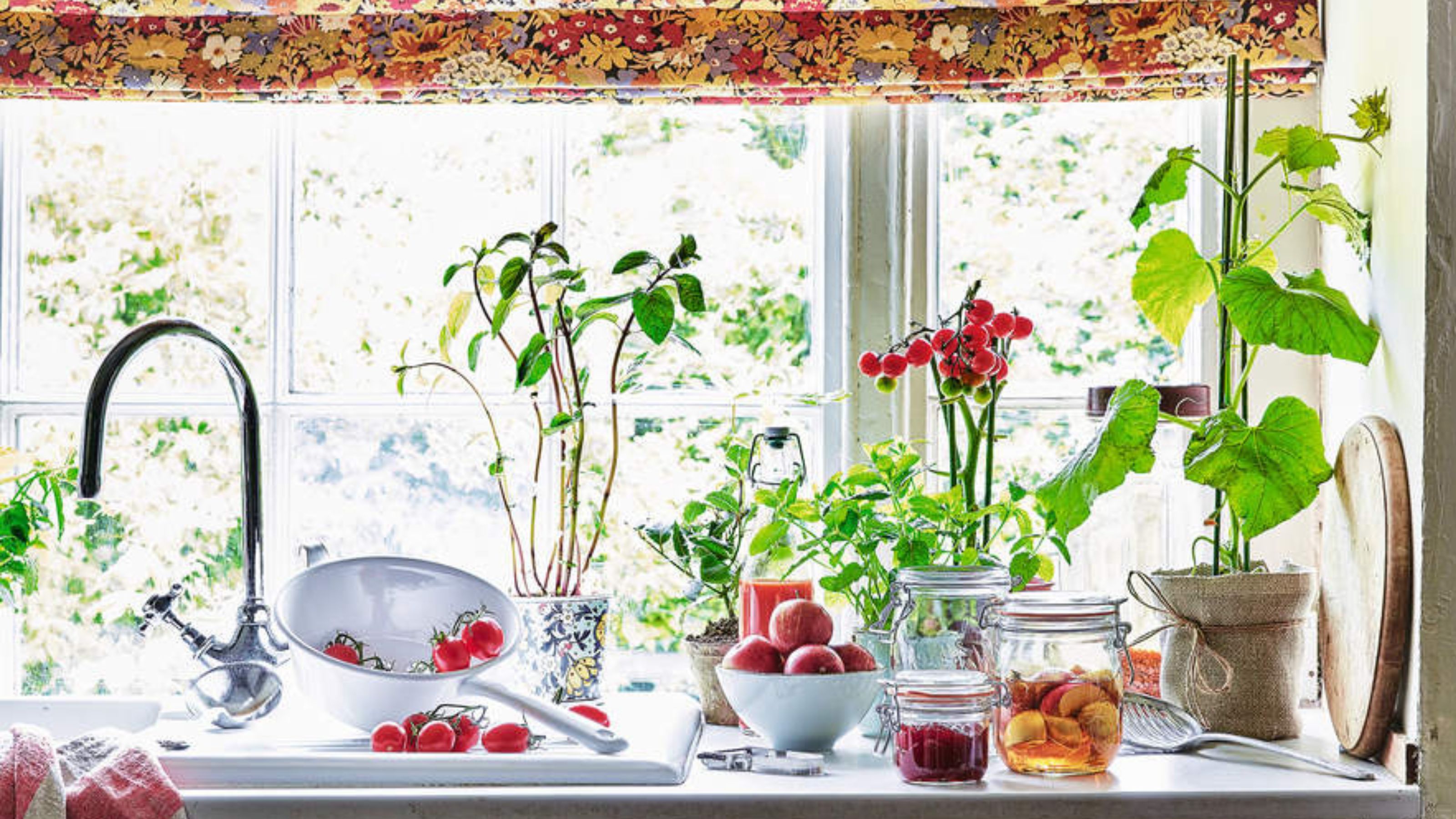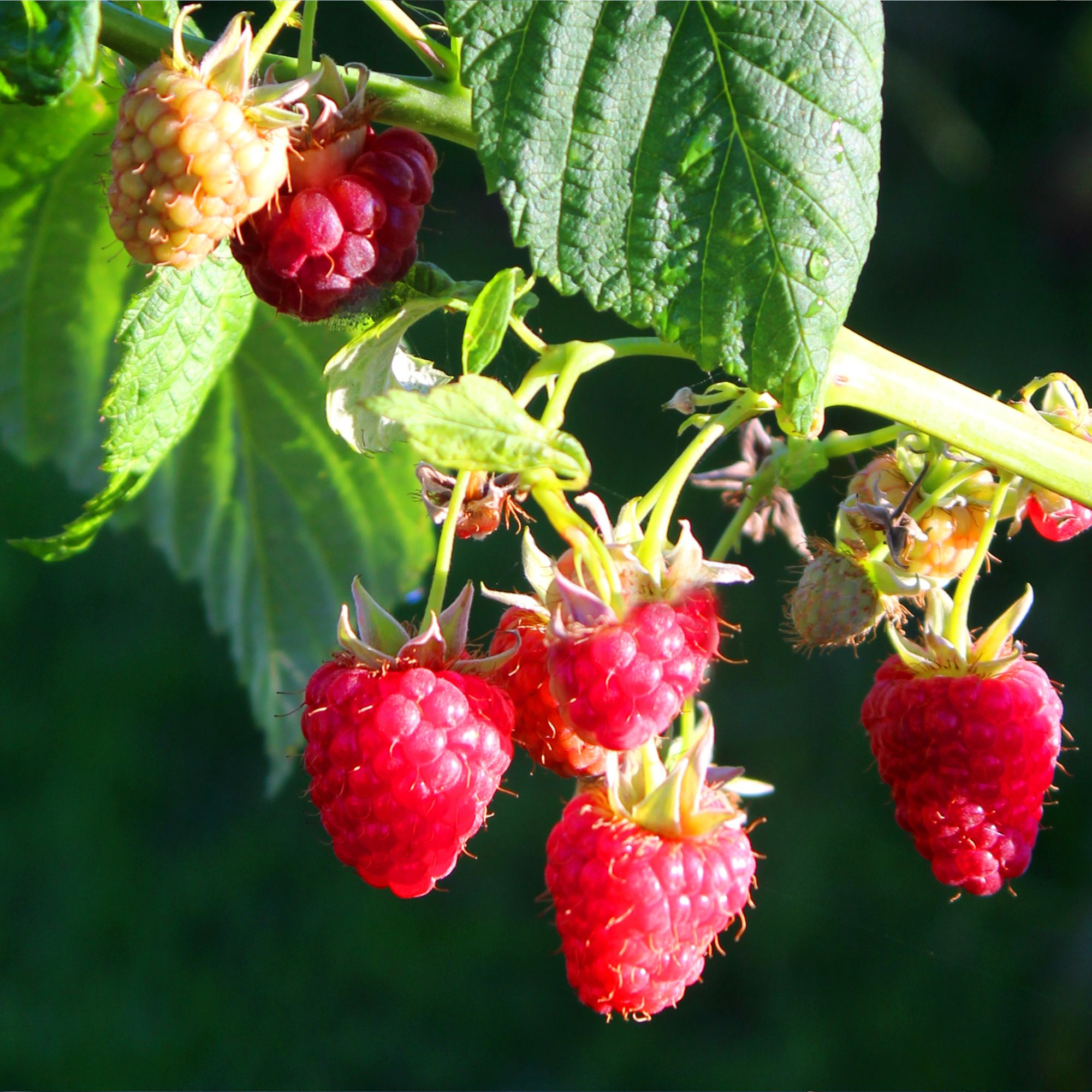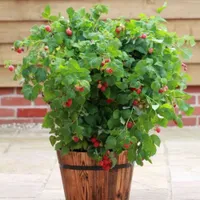Yes, you can grow raspberry canes in pots – how to get a bumper crop of raspberries on a balcony
You don't need lots of space to grow your own fruit – especially if you decide to plant raspberry canes


There is nothing we love more than growing our own delicious food (especially in a cost-of-living crisis), so is it any wonder that so many of us are googling how to grow raspberry canes right now?
Sweet, juicy, and high in fibre, vitamins, minerals and antioxidants, raspberries are the perfect GYO fruit to add to your list of garden ideas – even more so because they're perfect for growing in pots and containers.
Dubbing them 'super productive' balcony plants, Morris Hankinson promises: 'Unlike tomatoes, peppers or cucumbers that only last for one season, this trendiest of garden trends will keep going for many years of service, giving repeat crops of tasty raspberries.'

Morris Hankinson is the founder and managing director of Hopes Grove Nurseries Ltd, the UK’s only specialist grower-retailer of hedging plants.
After graduating with a Commercial Horticulture Degree from Writtle College, Essex in 1992, Morris established the award-winning nursery the same year on a half-acre plot at the 25-acre family farm in Tenterden, Kent. The business soon grew to cover the whole farm and now grows hedging plants across three nursery sites in the beautiful Weald of Kent totalling 130 acres, employing 20 full-time local staff, and serving over 17000 customers each year.

'Raspberry canes are a brilliant space-saving option for people looking to add to their list of small patio ideas and balcony garden ideas,' agrees Christopher O'Donoghue, one of the co-directors at Gardens Revived.
'They are very compact, growing high but not wide, which means they can fit into almost any small space – even a windowsill! Sunlight permitting, obviously.'
How to grow your own raspberry canes in pots
Raspberry Ruby Beauty | £24.99 at Primrose
This dwarfing raspberry plant is thornless and grows to just 1 metre tall , making it the perfect compact fruiting plant to add to even the smallest of outdoor spaces.
Similarly to getting the technique how to prune raspberries right, raspberry canes might sound complicated to grow, but they're actually very easy to keep alive and help thrive. As such, they are ideal planting fodder for those who know how to grow their own vegetables, fruit and herbs at home, as well as the greenest of beginners.
Intrigued? Look this way...
Sign up to our newsletter for style inspiration, real homes, project and garden advice and shopping know-how
What you will need:

- A raspberry plant (Christopher suggests you look for a dwarf or compact variety, like the Ruby Beauty at Primrose, as it will be perfectly suited to life in a container)
- A decent-sized pot, like this glazed planter from Homebase
- A good quality compost, like this John Innes No 3 Compost from Amazon
- A trowel
- A sturdy bamboo cane (you can buy them in bulk from Amazon)
- A bag of bark chippings
- Optional: plant food (Miracle-Gro Performance Organics Fruit & Veg Liquid Plant Food is bee, pet and child friendly)
Step-by step guide:
As already mentioned, growing raspberry canes in pots and containers is a relatively simple process. However, your new plant babies are more likely to fruit if you take heed of the following steps...
1. Choose your pot wisely
You are looking for a container that is deep enough to accommodate your raspberry plant's roots, and wide enough to allow the plant to spread.
'Anything less than 10 litres in volume (at least 30cm across) is likely to restrict them and compromise fruiting,' advises Morris. 'Even then, bigger would be better if you have space.'

If you're having trouble choosing, Morris says that a wider and more shallow pot is better than a deep one.
'Raspberries are shallow rooted and so in a deep pot their roots won’t explore the bottom third of the compost,' he adds.
2. Think about drainage
Raspberry canes are very thirsty plants, but they hate getting their feet wet.
'Make sure your pot has good drainage,' says Morris, advising that you 'check the holes in the base are a good size and adding some pieces of broken tile at the base to help surplus water get to the drainage holes'.
3. Fill your pot with compost

'Use good quality compost to fill the pot,' says Morris. 'I would recommend John Innes No 3 compost, as it is much more stable for long term cultivation. Add a little grit just to be sure of the drainage.'
4. Make sure to support your plants
You will need to plant one raspberry cane in the centre of each pot, according to Morris, but not too deeply: the first roots should be no more than 5cm (2in) below the soil surface. And, once you're done, be sure to attach it to a sturdy bamboo cane.
'Raspberry canes require extra support to keep them upright and prevent them from sprawling,' explains Christopher.
5. Add a mulch of bark chips

Be sure to add a mulch of bark chips or something similar to the surface of the compost after you plant. Doing so will 'conserve water and stop weeds growing,' according to Morris.
6. Find a sunny spot for your raspberry cane
Whether it's a windowsill, balcony, patio, or small garden, raspberry plants thrive in full sun.
'Make sure that they're getting at least six hours of sunshine a day,' advises Christopher. 'This is the key to growing tasty, juicy berries.'
7. Keep to a regular watering schedule

Raspberry plants need consistent watering, especially during dry spells. Using harvested rainwater wherever possible, aim to keep the soil moist, but make sure it's well-drained: waterlogged roots can cause a lot of problems for these fruiting plants.
'Make sure you give your raspberries a feed every so often with a balanced fertiliser, too,' says Christopher.
8. Harvest regularly
Make sure you pick your fruits at the peak of ripeness (anytime between June and September for summer raspberries, and mid-August and the first frosts for the autumn varieties).
Be sure to look for rich red berries, that are plump and easy to pull off. And try to pick on a dry day, as damp berries often turn mouldy.
9. Don't forget to prune

Regular pruning is essential when it comes to raspberry canes, not only for controlling the shape and size of your plant, but to ensure the best quality raspberries, too.
It's actually pretty simple to do: just cut all the old, woody, fruited stems right down to ground level after your plant's fruiting season is over and done with.
10. And be sure to ward off pests
'Your raspberries are likely to be the envy of all the local wildlife,' says Christopher, 'including birds and squirrels. I'd recommend protecting yours with some Enviromesh if you aren't the sharing type...'
If all of the above hasn't inspired you to start growing your own raspberries at home, Morris says it's worth remembering that, even when the plants finally outgrow their container, they can be planted out in the garden for another lease of life.
Consider us sold...
Are raspberries suitable for growing in pots?
So long as you select a dwarf or patio variety, raspberry canes make for excellent container plants. Morris warns that 'most varieties have thorns – not massive briars but enough to scratch when you brush past them on your balcony. If you can find them, choose a smooth stemmed variety like Glen Moy, Glen Ample or Glen Lyon'.
Whichever you choose, be sure to plant yours in a well-draining pot, give it plenty of water, and stick it in a lovely sunny spot to ensure yours thrives and produces plenty of delicious berries.
Can I use tomato feed on raspberries?
Tomato feeds contain high levels of potassium, which means that they are actually a brilliant plant food for raspberry canes. Follow the instructions on yours and use it to give your raspberry cane a tasty treat, and it should hopefully be encouraged to flower and fruit.
Can I grow raspberries and strawberries in the same pot?
'If you select a large pot, you could add some ‘companion’ strawberry plants to the mix and allow them to tumble over the edge,' says Morris.
'This will mean that your raspberry canes will yield two crops of berries!'

Kayleigh Dray became Ideal Home’s Acting Content Editor in the spring of 2023, and is very excited to get to work. She joins the team after a decade-long career working as a journalist and editor across a number of leading lifestyle brands, both in-house and as a freelancer.
